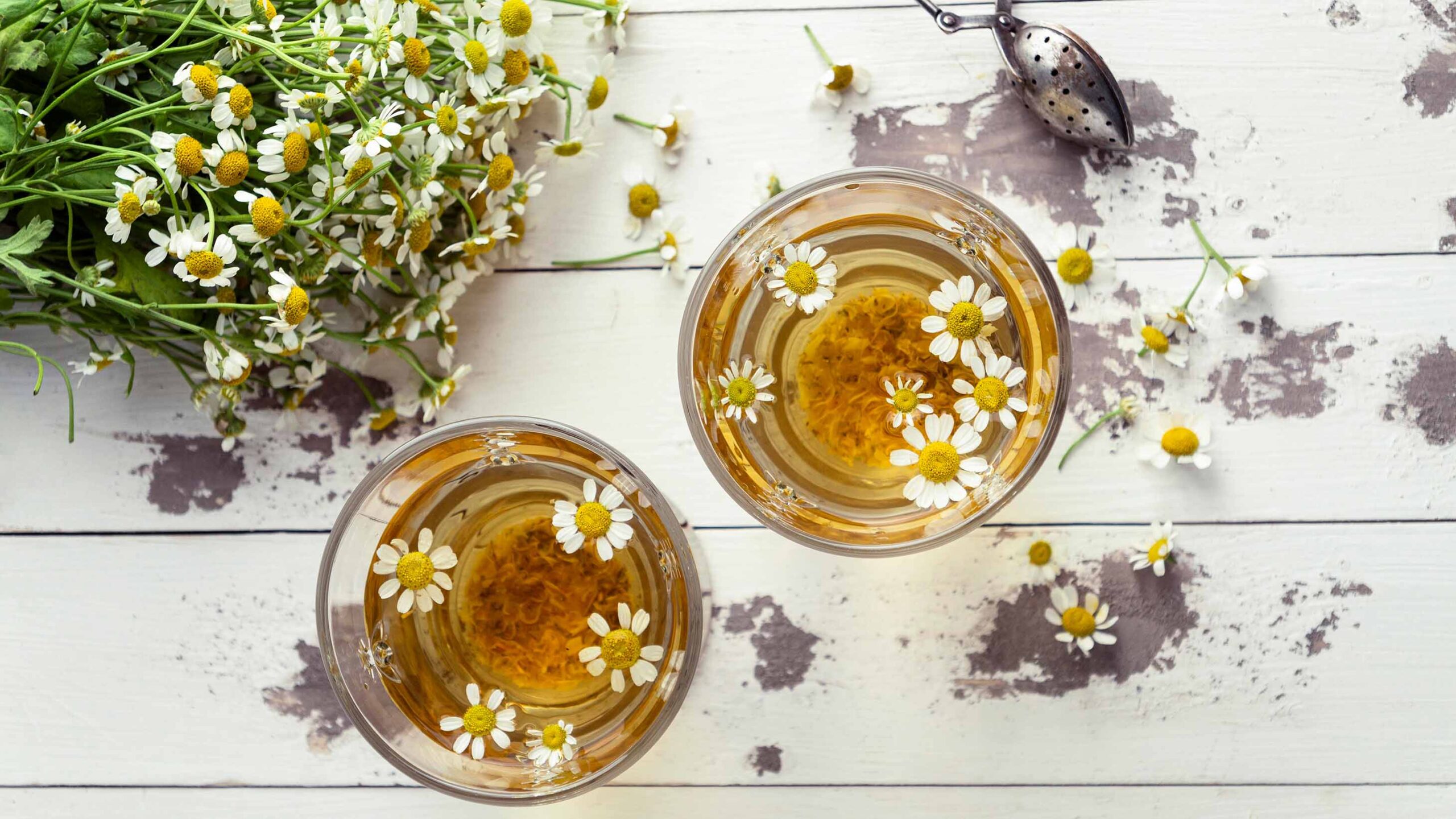
Chamomile Extract
Matricaria recutita, generally known as Chamomile, belongs to the Asteraceae family. Chamomile has a smooth stem which is almost glabrous and usually heavily branched. The plant has capitulas surrounded by involucral bracts. The chamomile flowers consist of white petals and a conical yellow centre.
Medicinal Usage
Matricaria recutita is one of the well-known medicinal plants in the world. It has many different biological and pharmacological effects. The gastrointestinal protective effects of Chamomile extract on rats are observed in many studies. (1) Significant results are observed in a review article published in 2020 that Chamomile extract lowers blood sugar in humans. (2) Antioxidant and antimicrobial activities of Chamomile extract are investigated in a study, and positive results are obtained. (3) Additionally, another study stated that the Chamomile extract has many relaxing effects, such as decreasing the heart beating rate, increasing the skin temperature and easing depression. (4) To conclude, Chamomile extract is used for its antiviral, anti-inflammatory, antidiabetic, antioxidant, anti-spasmodic and sedative effects.
Chemistry Behind
The chemical constituents responsible for Chamomile’s medicinal usage are sesquiterpene and phenolic compounds. One of the sesquiterpene compounds, α-bisabolol, is related to the gastrointestinal effects of Chamomile extract. On the other hand, apigenin flavonoid, which is among the phenolic compounds, is the most influential compound for the pharmacological effects of Chamomile. Apigenin flavonoid binds with benzodiazepines and γ-aminobutyric acid (GABA) receptors in the brain, soothes anxiety and stress. (1)
References
- Sílvia Petronilho, Marcelo Maraschin, Manuel A. Coimbra, Sílvia M. Rocha, In vitro and in vivo studies of natural products: A challenge for their valuation. The of chamomile (Matricaria recutita L.), Industrial Crops and Products, Volume 40, 2012, Pages 1-12, ISSN 0926-6690
- Fatemeh Hajizadeh-Sharafabad, Parisa Varshosaz, Hamed Jafari-Vayghan, Mohammad Alizadeh, Vahid Maleki, Chamomile (Matricaria recutita L.) and diabetes mellitus, current knowledge and the way forward: A systematic review, Complementary Therapies in Medicine, Volume 48, 2020, 102284, ISSN 0965- 229
- Mohamed Hussein Hamdy Roby, Mohamed Atef Sarhan, Khaled Abdel-Hamed Selim, Khalel Ibrahim Khalel, Antioxidant and antimicrobial activities of essential oil and extracts of fennel (Foeniculum vulgare L.) and chamomile (Matricaria chamomilla L.), Industrial Crops and Products, Volume 44, 2013, Pages 437-445, ISSN 0926-6690
- Nakamura, K. Moriya, S. Oda, E. Yano, H. Kakuta, Changes in the parameters of autonomic nervous system and emotion spectrum calculated from encephalogram alter drinking chamomile tea Aroma Res., 3 (2002), pp. 251-255
